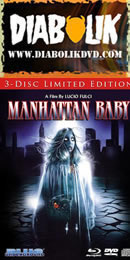

Color, 1982, 89m.
Directed by Lucio Fulci
Starring Christopher Connelly, Martha Taylor, Brigitta Boccoli, Giovanni Frezza, Cosimo Cinieri, Cinzia De Ponti, Carlo De Mejo
Blue Underground (Blu-ray & DVD) (US R0 HD/NTSC), Network (DVD) (UK R2 PAL), Koch Media (DVD) (Germany R2 PAL) / WS (2.35:1) (16:9)
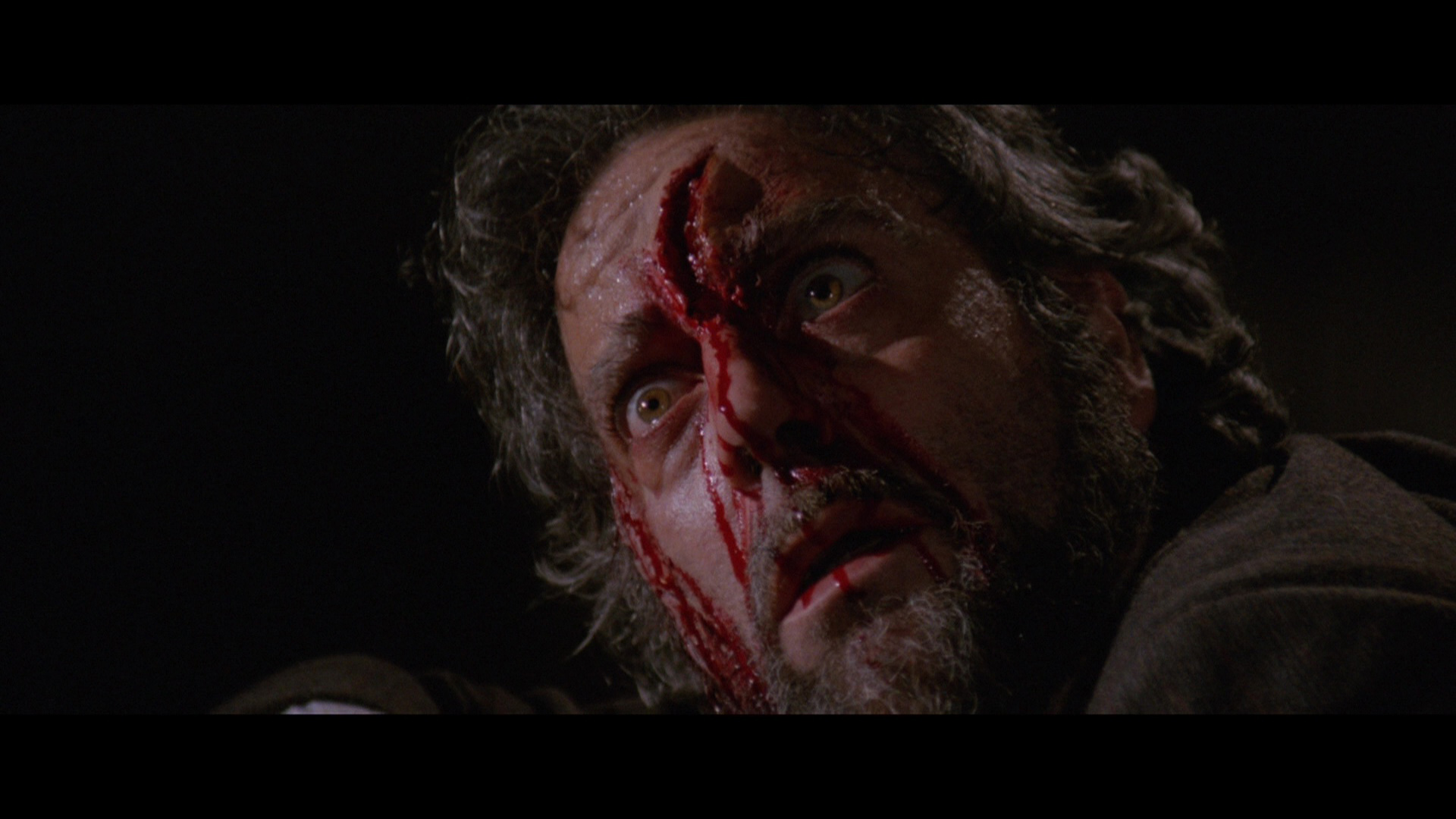
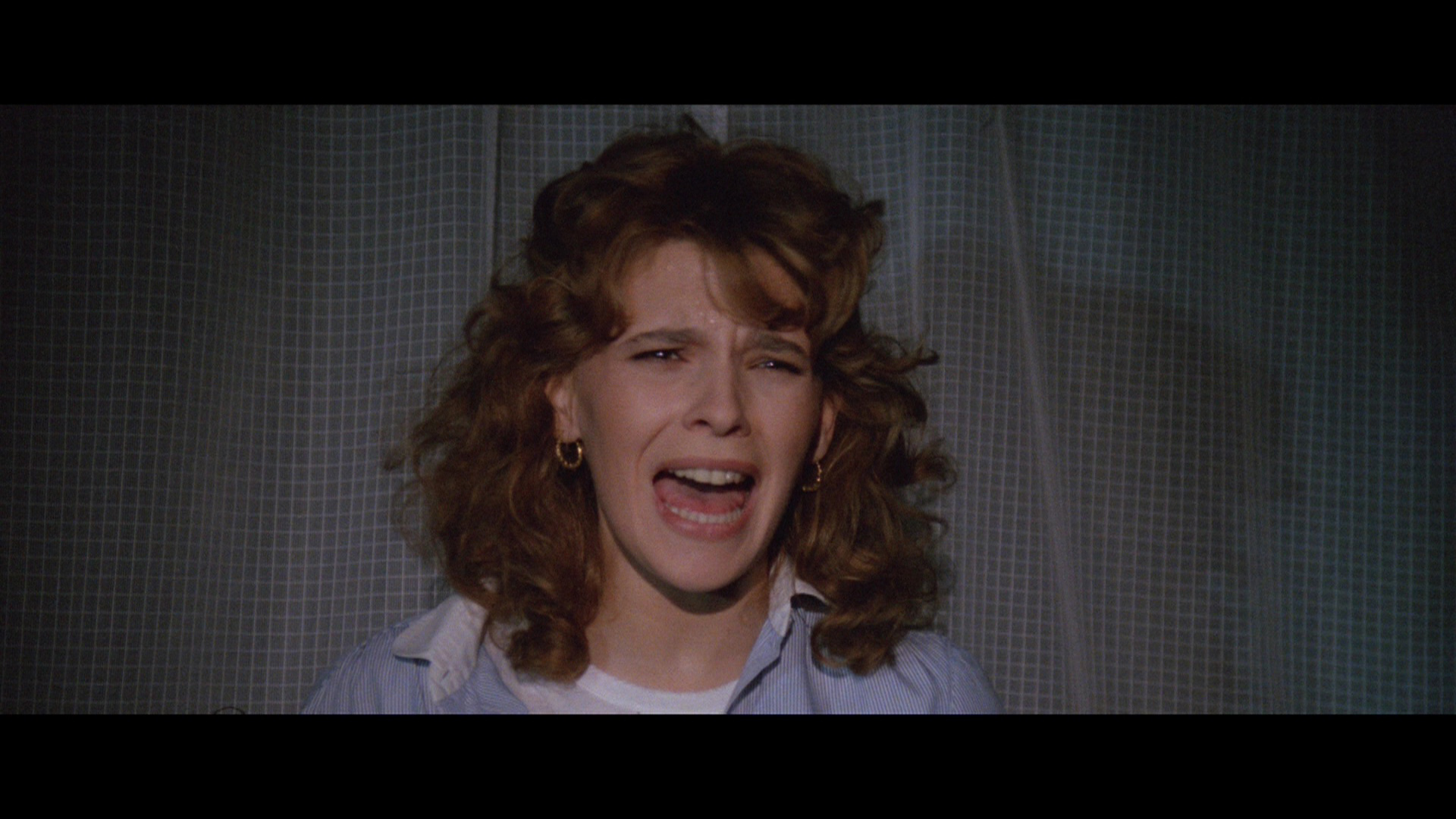
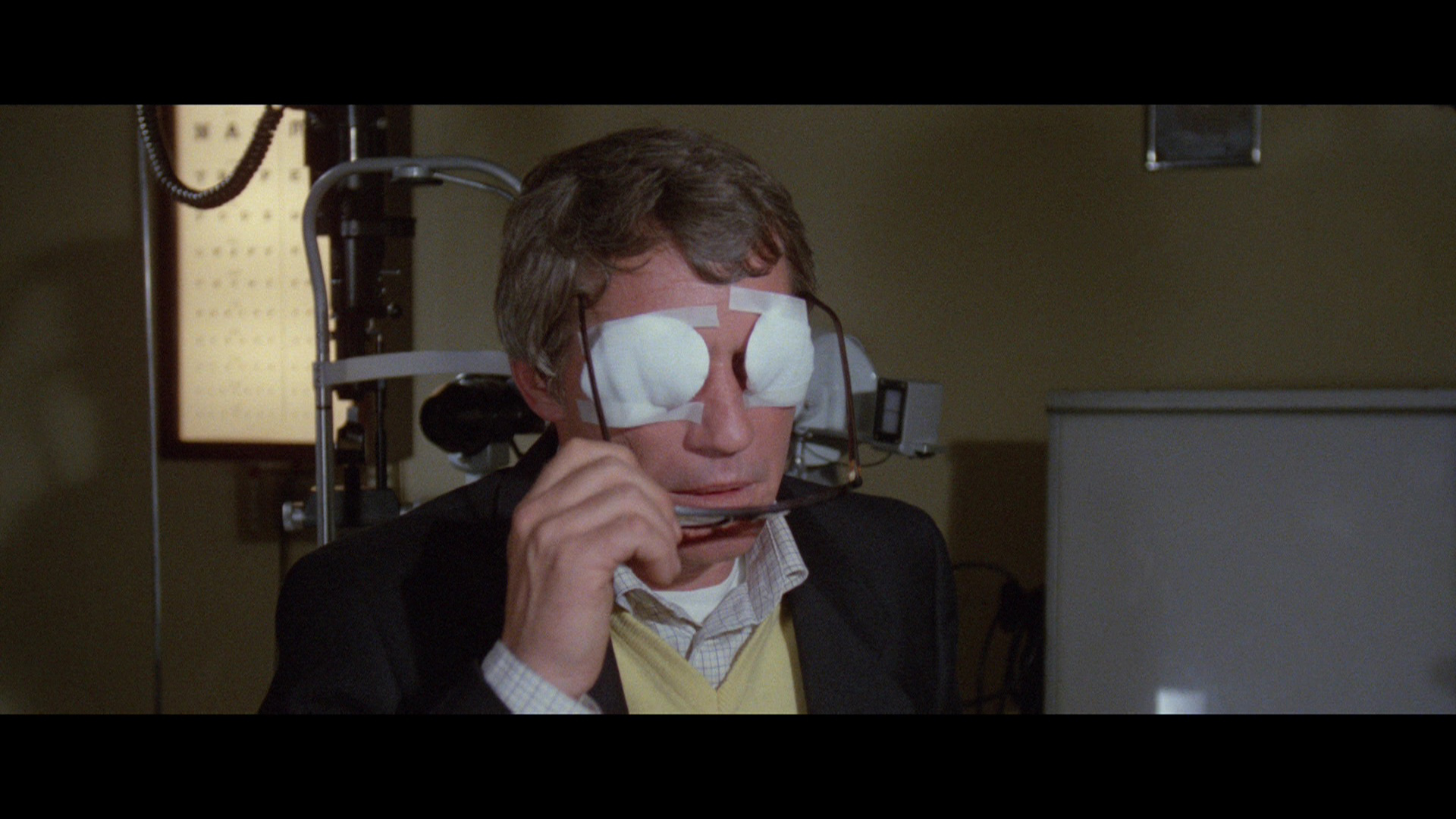 Welles") - can you identify that character name, genre buffs? - George races against time to turn back the curse which is slowly consuming his family.
Welles") - can you identify that character name, genre buffs? - George races against time to turn back the curse which is slowly consuming his family.
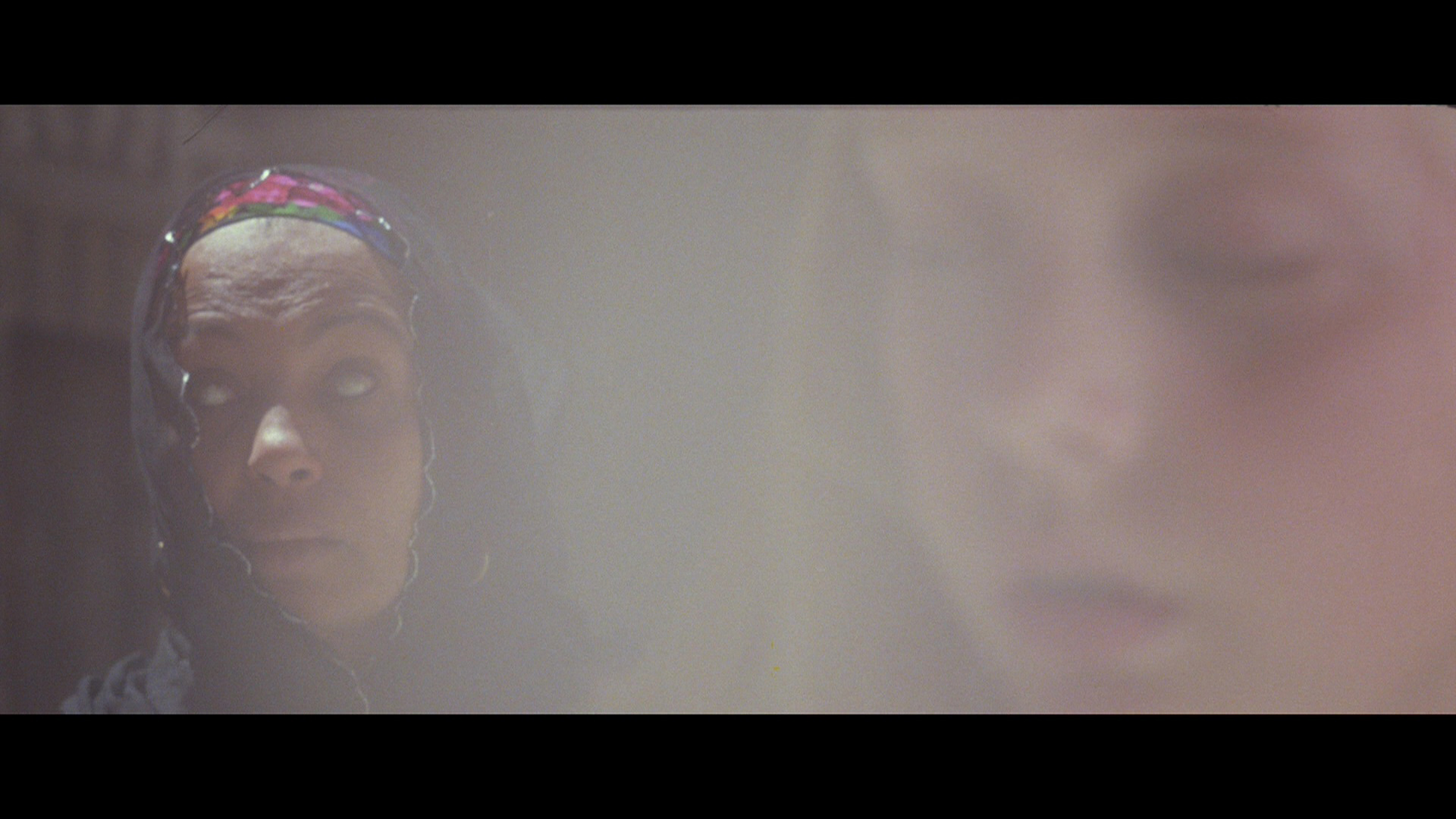 lifted from The Beyond and City of the Living Dead. Fulci's love for marauding animals is once again present as actors are menaced by snakes (one killed very unnecessarily on camera early on), scuttling scorpions lurking in office furniture, and most memorably, a stuffed bird that comes to life during the squishy, downbeat climax. The opening sequence of the film is arguably its strongest, with minimal dialogue and Frizzi's theme accompanying a striking succession of interlaced visuals depicting Connelly's tomb defiling and his daughter's own corruption. Unlike Fulci's gore epics, the horror here seems to exist on the periphery and usually verges on pure fantasy: a wall splits open to disgorge a pair of monstrous hands, a man is trapped in an elevator which splits open into a bottomless abyss, a room's ceiling transforms into a blue-lit desert landscape, and a splash of blood on a wall spreads across the screen with a life of its own. Very little of this makes much sense, but Italian horror regulars should already expect that.
lifted from The Beyond and City of the Living Dead. Fulci's love for marauding animals is once again present as actors are menaced by snakes (one killed very unnecessarily on camera early on), scuttling scorpions lurking in office furniture, and most memorably, a stuffed bird that comes to life during the squishy, downbeat climax. The opening sequence of the film is arguably its strongest, with minimal dialogue and Frizzi's theme accompanying a striking succession of interlaced visuals depicting Connelly's tomb defiling and his daughter's own corruption. Unlike Fulci's gore epics, the horror here seems to exist on the periphery and usually verges on pure fantasy: a wall splits open to disgorge a pair of monstrous hands, a man is trapped in an elevator which splits open into a bottomless abyss, a room's ceiling transforms into a blue-lit desert landscape, and a splash of blood on a wall spreads across the screen with a life of its own. Very little of this makes much sense, but Italian horror regulars should already expect that.
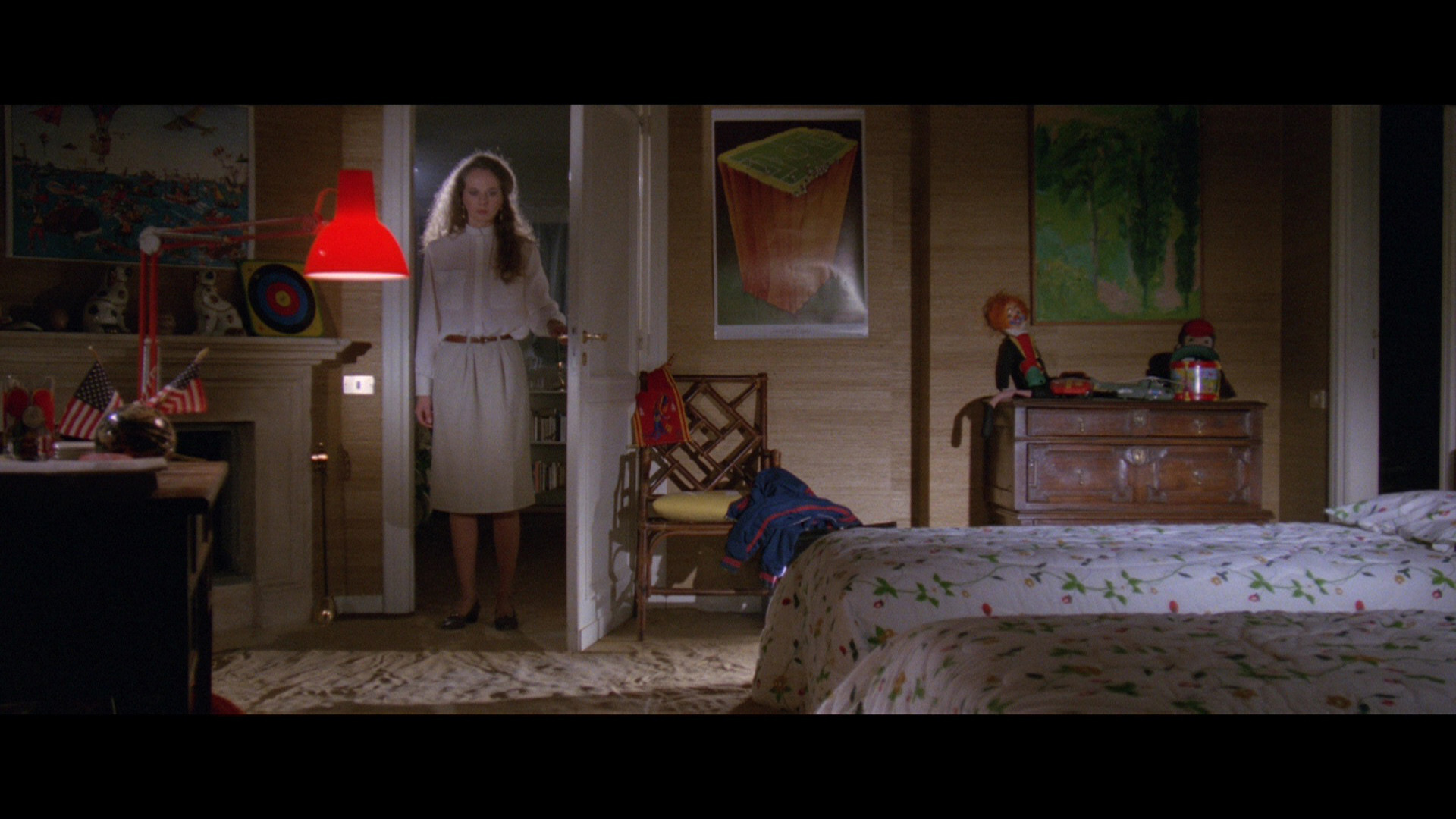 Baby (whose title means nothing really) was one of the last Fulci films to receive a notable theatrical release, under the title of Eye of the Evil Dead (complete with a poster depicting a blonde lass in skimpy clothing standing in front of some pyramids!). Lightning Video issued an eyesore VHS release, and overseas versions were little better, turning the lyrical scope photography into a senseless jumble of eyeballs and out of focus location shots. Not that it had much competition, but Anchor Bay's DVD from 2001 looks as good as one could expect from the time and completely restores the correct framing. Fulci's use of the zoom lens produces some unsightly excessive noise in a few shots, but otherwise the colors and detail are stable and pleasing to the eye. The disc also includes the European theatrical trailer (which has already appeared on numerous Japanese releases) and a nice 8-minute video interview with screenwriter Dardano Sacchetti, who collaborated with Fulci for the last time on this film after a number of smash international hits. He has some interesting things to say about the film, which was plagued with difficulties (very little of original concept as The Evil Eye made it to the final product) but remains an oddly compelling entry in the last golden age of Italian horror. The same disc was later repackaged by Blue Underground, first as a standalone and then reconfigured with other Fulci titles
Baby (whose title means nothing really) was one of the last Fulci films to receive a notable theatrical release, under the title of Eye of the Evil Dead (complete with a poster depicting a blonde lass in skimpy clothing standing in front of some pyramids!). Lightning Video issued an eyesore VHS release, and overseas versions were little better, turning the lyrical scope photography into a senseless jumble of eyeballs and out of focus location shots. Not that it had much competition, but Anchor Bay's DVD from 2001 looks as good as one could expect from the time and completely restores the correct framing. Fulci's use of the zoom lens produces some unsightly excessive noise in a few shots, but otherwise the colors and detail are stable and pleasing to the eye. The disc also includes the European theatrical trailer (which has already appeared on numerous Japanese releases) and a nice 8-minute video interview with screenwriter Dardano Sacchetti, who collaborated with Fulci for the last time on this film after a number of smash international hits. He has some interesting things to say about the film, which was plagued with difficulties (very little of original concept as The Evil Eye made it to the final product) but remains an oddly compelling entry in the last golden age of Italian horror. The same disc was later repackaged by Blue Underground, first as a standalone and then reconfigured with other Fulci titles 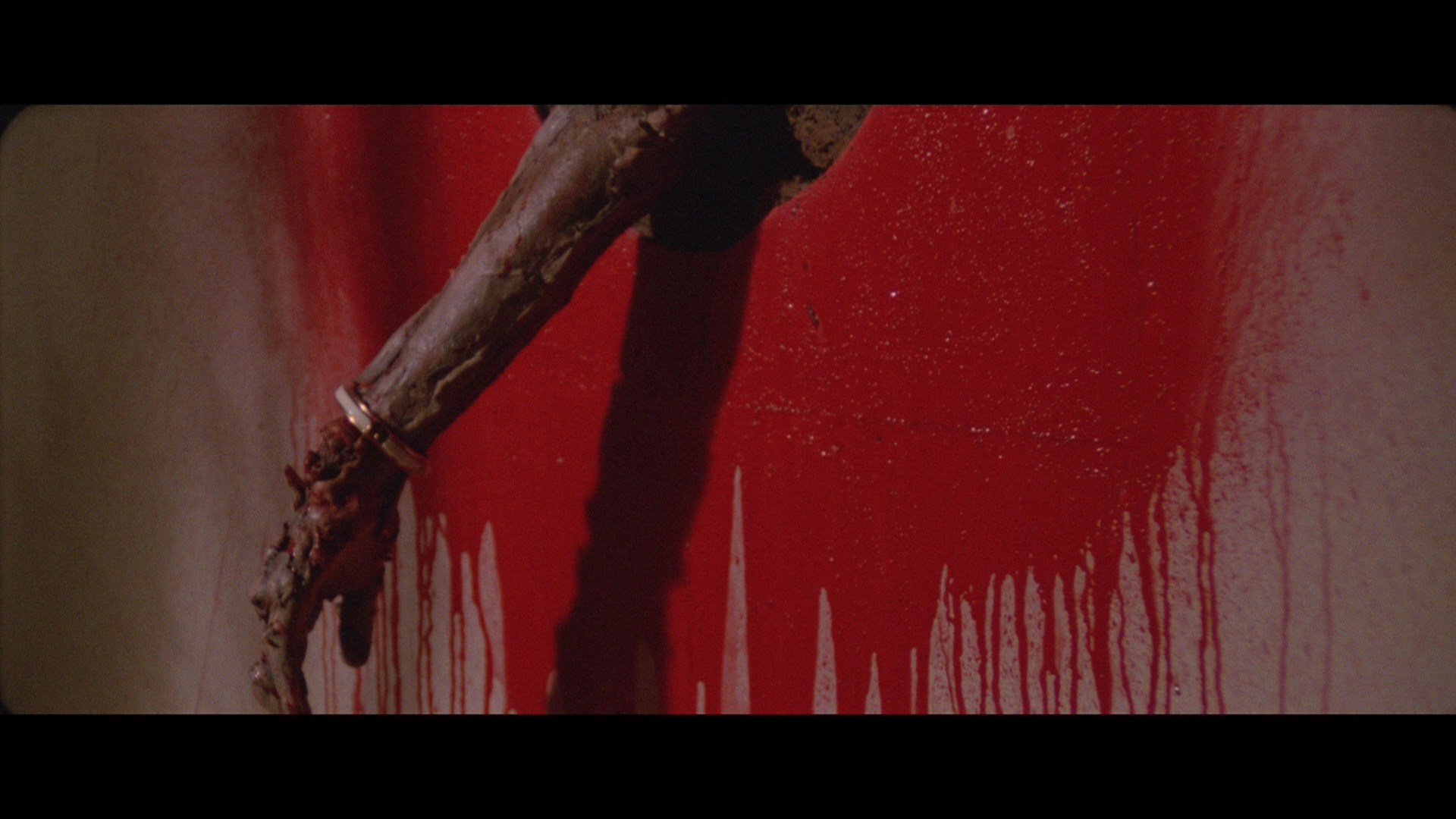 from the label.
from the label.
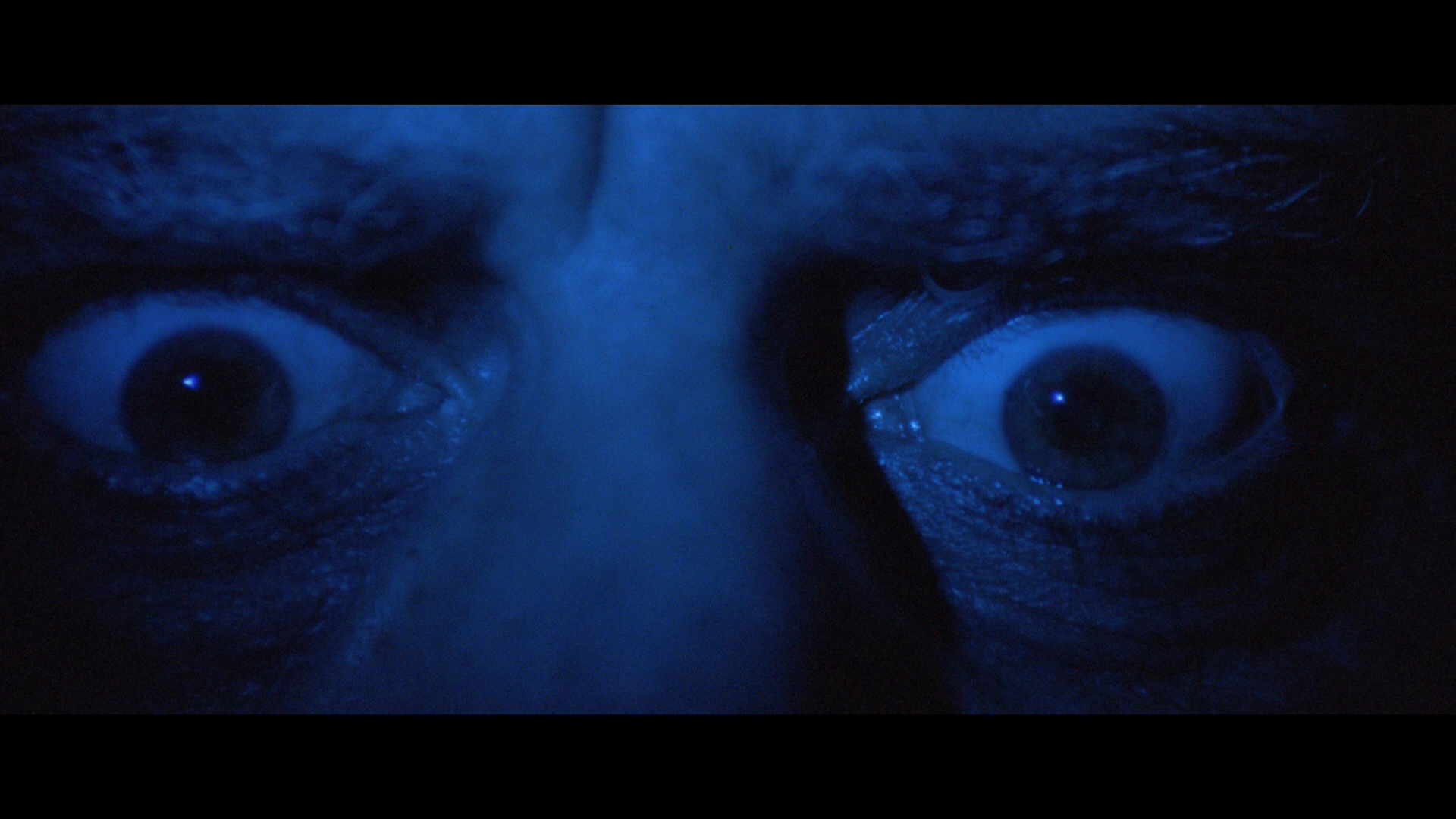 means it's still quite soft and stylized at times, but it's safe to say this is about as good as this could possibly look unless it gets an unlikely 4K release somewhere down the road. The English audio options include a spacious new DTS-HD MA 5.1 mix that actually works pretty well with Frizzi's score spread to the front channels (don't expect much surround-wise), and the original mono mix, DTS-HD MA as well; optional English, French, and Spanish subtitles are included.
means it's still quite soft and stylized at times, but it's safe to say this is about as good as this could possibly look unless it gets an unlikely 4K release somewhere down the road. The English audio options include a spacious new DTS-HD MA 5.1 mix that actually works pretty well with Frizzi's score spread to the front channels (don't expect much surround-wise), and the original mono mix, DTS-HD MA as well; optional English, French, and Spanish subtitles are included.
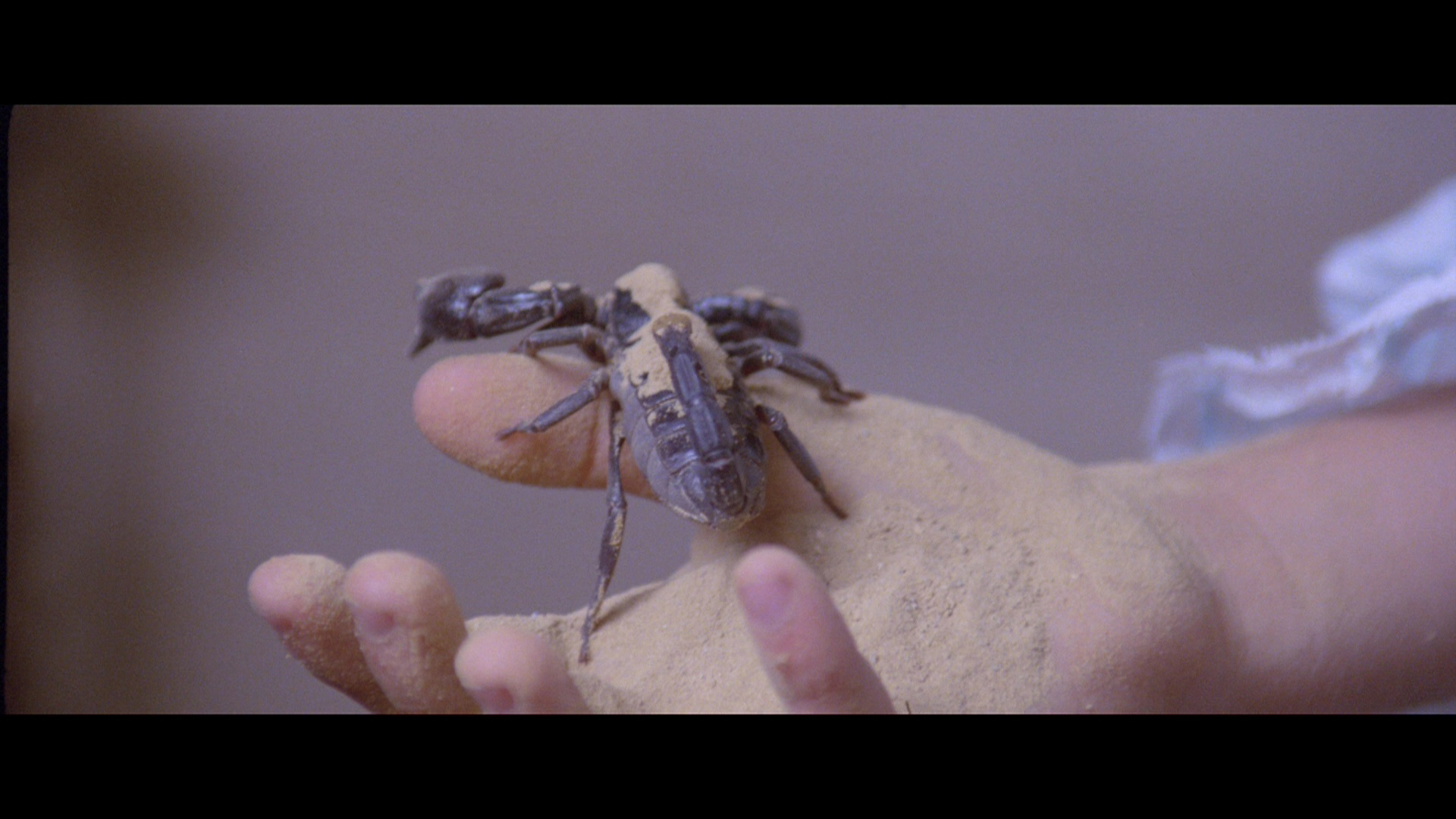 The 11-minute "25 Years with Fulci" puts the
The 11-minute "25 Years with Fulci" puts the 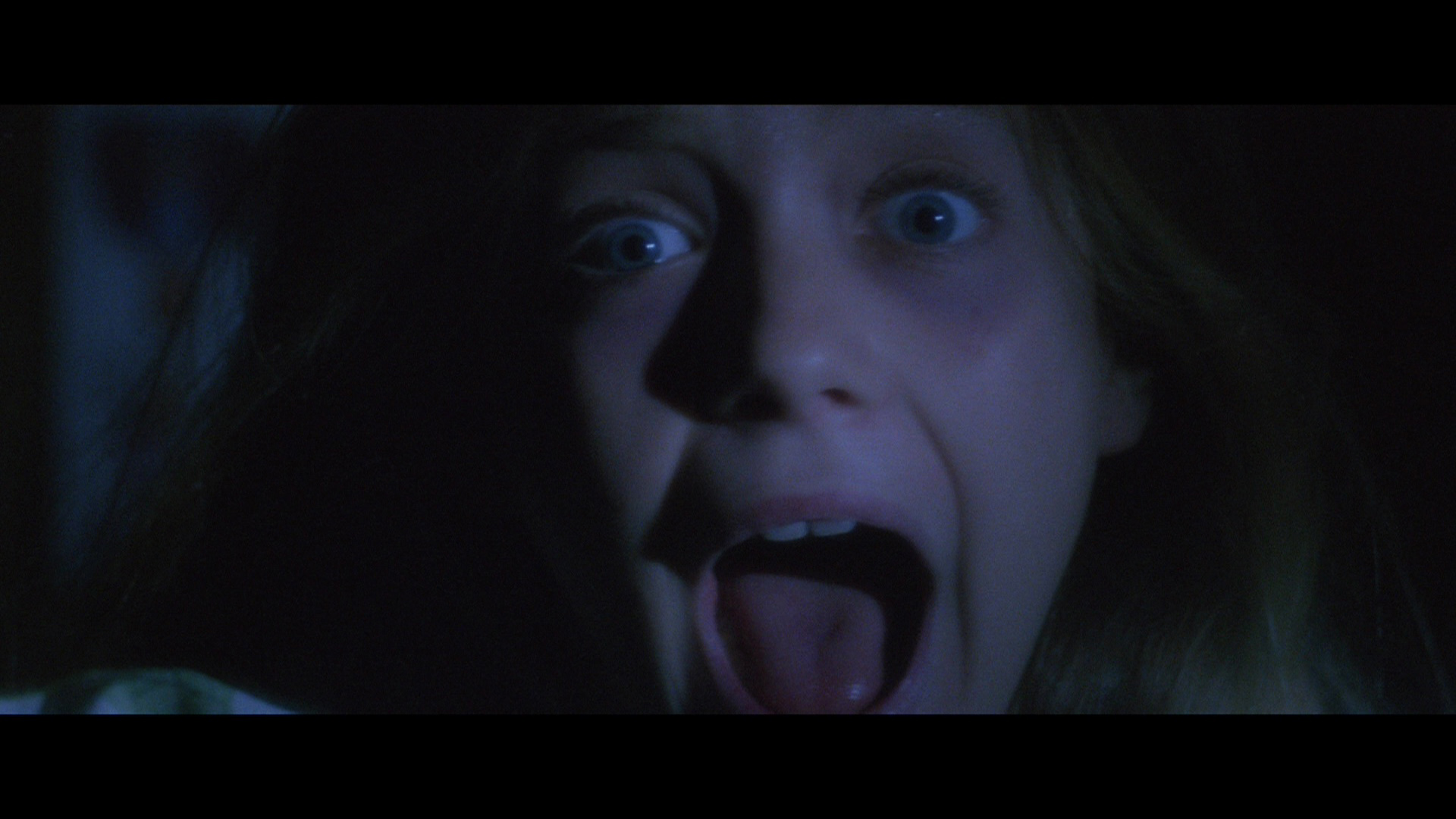 spotlight on makeup effects artist Maurizio Trani, who starts with his tumultuous first encounter with Fulci on Don't Torture a Duckling and goes through their numerous collaborations including work with the Giannetto de Rossi (whom Trani takes to task for never saying no to any effects challenge in a script). He also offers some endearing impressions of the director's personality, painting a friendlier portrait than some other accounts. The most eloquent spokesman for Fulci's cinema, Stephen Thrower, offers another perceptive analysis with a 13-minute interview, noting its unusually high doses of optical effects, its troubled status as the follow-up release to the highly controversial Ripper, the epic and mysterious serenity of the soundtrack, and its strange swirl of cinematic influences including Rosemary's Baby, The Exorcist, and The Awakening. A live 9-minute suite of the score performed by Frizzi is another highlight, complete with some evocative female vocals added to the mix, and an HD gallery of posters and stills offers an overview of the film's peculiar history in theaters and on home video. Disc three is the original soundtrack CD, replicating the 12-track expanded edition from Beat Records a few years ago. The liner notes booklet features an essay by Troy Howarth, adapting material from his Fulci book Splintered Visions into a frank assessment of the film's virtues and faults; he's a bit hard on Connelly (who's fine if unremarkable) but hits the mark with his rundown of Fulci's career to that point and how the film's problematic genesis led to a compromised but fascinating final product.
spotlight on makeup effects artist Maurizio Trani, who starts with his tumultuous first encounter with Fulci on Don't Torture a Duckling and goes through their numerous collaborations including work with the Giannetto de Rossi (whom Trani takes to task for never saying no to any effects challenge in a script). He also offers some endearing impressions of the director's personality, painting a friendlier portrait than some other accounts. The most eloquent spokesman for Fulci's cinema, Stephen Thrower, offers another perceptive analysis with a 13-minute interview, noting its unusually high doses of optical effects, its troubled status as the follow-up release to the highly controversial Ripper, the epic and mysterious serenity of the soundtrack, and its strange swirl of cinematic influences including Rosemary's Baby, The Exorcist, and The Awakening. A live 9-minute suite of the score performed by Frizzi is another highlight, complete with some evocative female vocals added to the mix, and an HD gallery of posters and stills offers an overview of the film's peculiar history in theaters and on home video. Disc three is the original soundtrack CD, replicating the 12-track expanded edition from Beat Records a few years ago. The liner notes booklet features an essay by Troy Howarth, adapting material from his Fulci book Splintered Visions into a frank assessment of the film's virtues and faults; he's a bit hard on Connelly (who's fine if unremarkable) but hits the mark with his rundown of Fulci's career to that point and how the film's problematic genesis led to a compromised but fascinating final product.